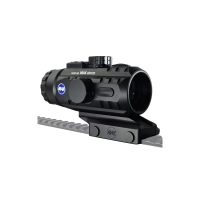Operational supervision
Exhaust system/supercharging
A3.06.06.00
M20
en / 19.10.93 BA000066 1/3
Ĺ
Exhaust gas temperatures
A comparison of the exhaust gas temperatures with the values from the acceptance test and the
records during the tests/sea trials is best suited to assess the thermodynamic performance of the
engine and to analyze any deviations from the new condition of the engine (supercharging,
injection, combustion). Injection pump or nozzle wear, for instance, will have a direct effect on the
thermal engine performance. The influence of the prevailing air intake conditions on the engine data
must be seen and taken into account.
The exhaust gas temperatures after the cylinders are only an approximate value for the assessment
of each cylinder. The temperature readings include heating of the thermometer by the exhaust
gases from the cylinder as well as the swirl effects from the exhaust manifold. Any deviations
among the cylinders within the scope of thee values mentioned in the acceptance test records are
perfectly normal despite balanced cylinder power figures of the various cylinders. The result of such
a measurement has therefore only a restricted meaning, which can lead to false conclusions. For
this reason, in order to attain the same temperature readings, it is not permissible by any means to
alter cylinder fills or even the supply rates of the cylinders, which would disrupt the balance
between cylinders with the same power values.
Provided the fuel cam setting is correct, the fuel rack position of the injection pump alone is decisive
for balancing the cylinder power values.
The temperatures after cylinder, however, should not deviate more than ± 30 K from their respective
cylinder value of the acceptance test records A1.
10.
Check the temperature after the cylinders regularly.
If there are any deviations the cause must be found (e.g. nozzle, pump, exhaust valve). See also
Fault tracing A3.11.18.nn.
Exhaust-gas temperature monitoring
Exhaust-gas monitoring is carried out either manually with thermometers at the cylinder head or by
means of a monitoring system (fee ler at the cylinder head), which triggers an alarm if the peak
values are exceeded (cylinder thermally overloaded and/or complete misfiring).
However, it should be observed, that even operation with partial misfiring puts an impermissible
amount of strain on the flexible co upling. Refer to misfiring operation A3.12.02.nn.

